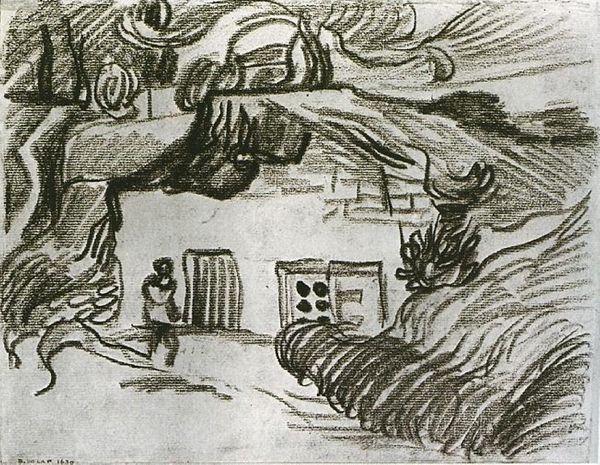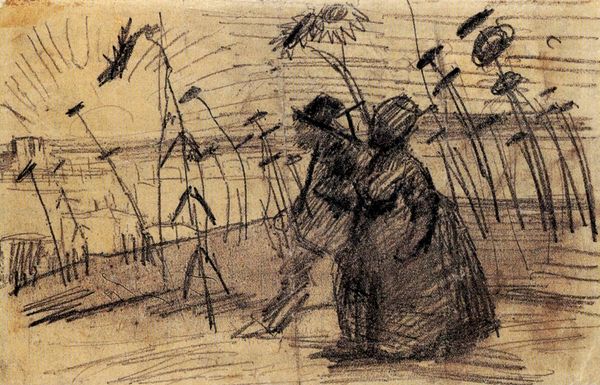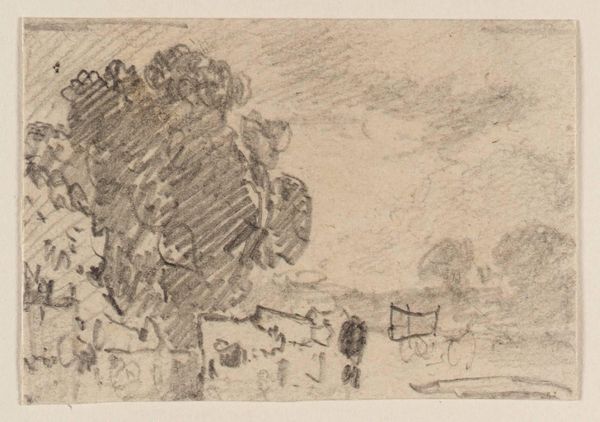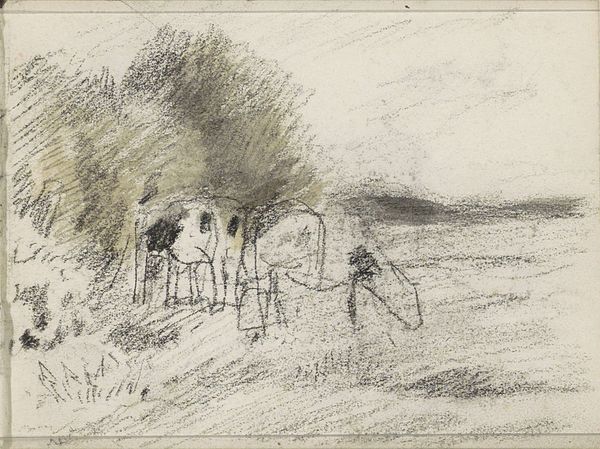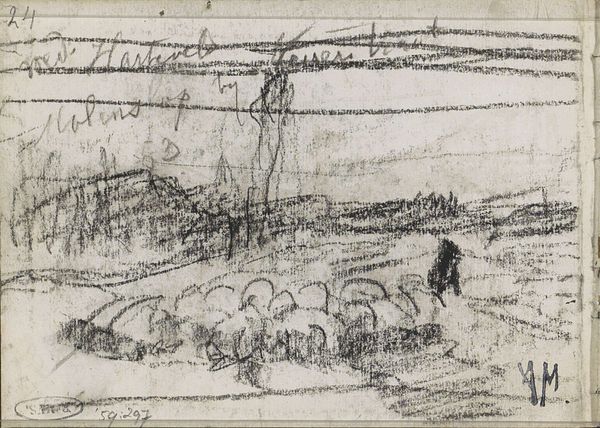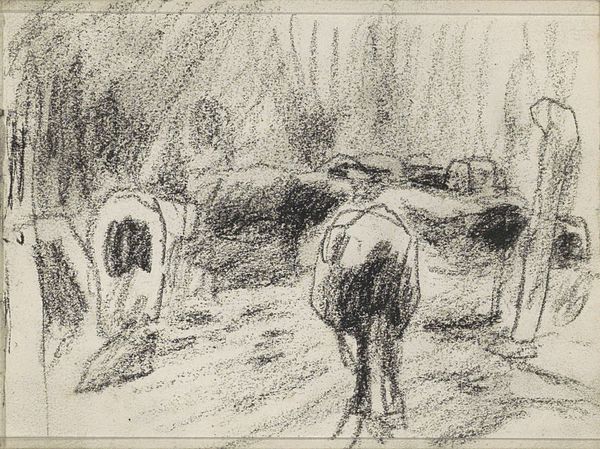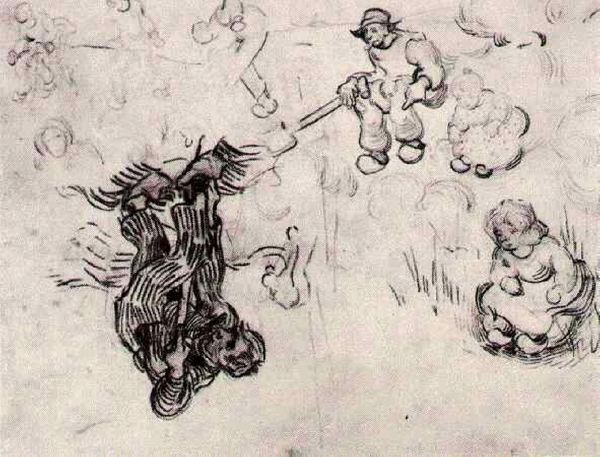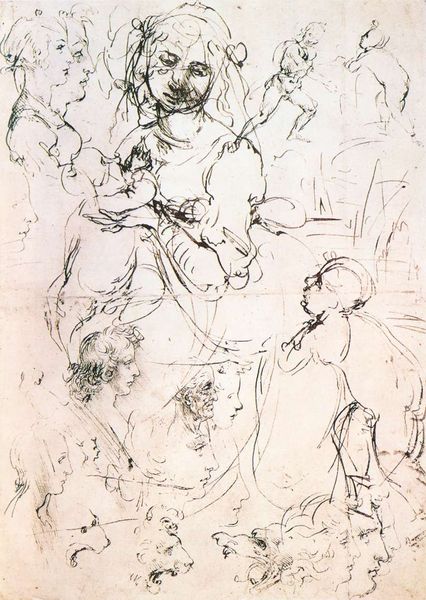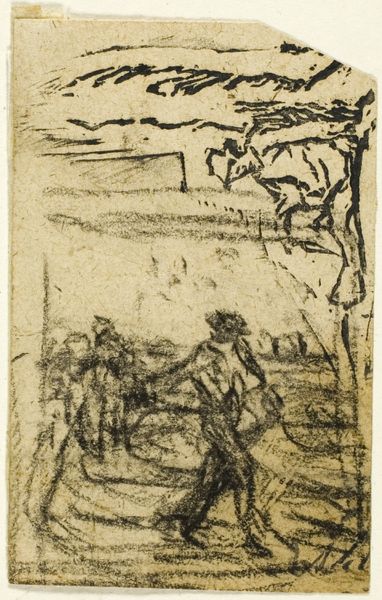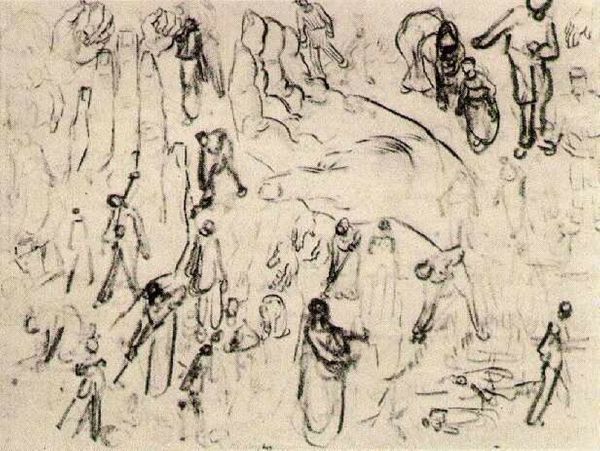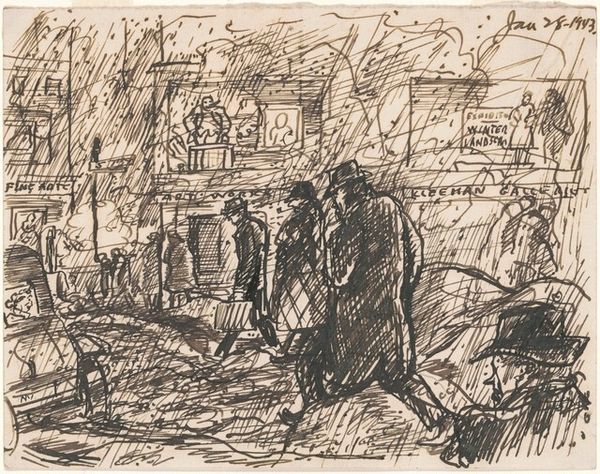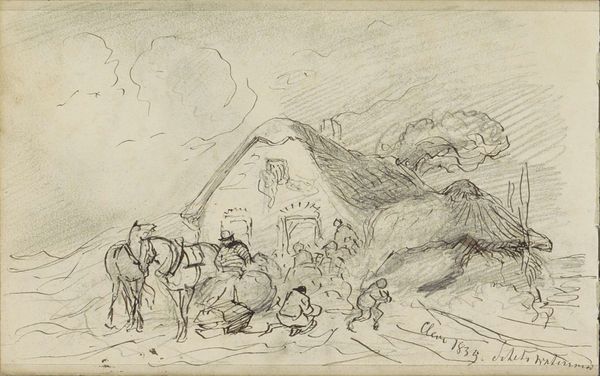
drawing, paper, pencil
#
portrait
#
drawing
#
impressionism
#
landscape
#
figuration
#
paper
#
pencil
#
human
Copyright: Public domain
Curator: Just stepping back to take it all in... "Sketches of a Cottage and Figures," Van Gogh, around 1890. Immediately, I’m struck by its restless energy, even in something that feels like a quick study. Editor: Restless is a great word for it. Looking at this drawing—pencil on paper—I'm reminded of how rural labor was represented, and often romanticized, in 19th-century art. There's a focus on the everyday lives of peasants, their connection to the land. It feels almost anthropological. Curator: Yes! And the cottage itself, this… collapsing, almost cartoonish shape in the background! It looks less like a haven and more like another being wrestling with the elements. See how those figures seem to sprout right out of the land, faces obscured, their identities merged with the earth itself? Editor: Absolutely. Van Gogh, even in these preliminary sketches, grapples with social realities and the human condition. Consider how art served both to document and, at times, to invisibilize inequalities, particularly the lived realities of women. Are they part of the landscape or separate? How do social expectations shape these depictions? Curator: I love that questioning. And speaking of expectations... I always expect blazing color with Van Gogh, but here, the somber tones amplify a sense of…starkness. It's like the essence of the scene distilled down to raw emotion, scratching on the page. Editor: True. There is that tension with his vibrant color work. This feels more akin to exploring how labor and rural life intersect with prevailing social structures and ideologies. The sketches prompt questions about access, agency, and how these people were viewed and treated. Curator: It becomes about the artist's internal struggle as much as the scene before him, right? A glimpse behind the curtain, almost uncomfortably so. It pulls me in because, beneath the simple lines, I find layers and layers. Editor: Yes, and that internal struggle—expressed here in charcoal—echoes across time and mediums, linking the artwork to enduring questions about justice, representation, and the dignity of work. It urges us to view his practice as part of a long history of cultural expression. Curator: It's remarkable how even what feels like a fragment can contain such depth. Editor: Absolutely. It prompts essential questions about our relationships to each other.
Comments
No comments
Be the first to comment and join the conversation on the ultimate creative platform.
